Nyasa peacock - Aulonocara nyassae
Scientific name: Aulonocara nyassae
Common name: Nyasa peacock
Family: Cichlidae
Usual size in fish tanks: 7 - 8 cm (2.76 - 3.15 inch)
014
Recommended pH range: 7.8 - 8.5
Recommended water hardness: 10 - 25°N (178.57 - 446.43ppm)
0°C 32°F30°C 86°F
Recommended temperature range: 22 - 25 °C (71.6 - 77°F)
The way how these fish reproduce: Spawning
Where the species comes from: Africa
Temperament to its own species: peaceful
Temperament toward other fish species: peaceful
Usual place in the tank: Middle levels
Origin
The Nyasa Peacock (Aulonocara nyassae) is native to Lake Malawi in East Africa, one of the world’s largest and most biodiverse freshwater lakes. Lake Malawi is home to many unique cichlid species that have adapted to different ecological niches within the lake, including rocky shorelines, sandy bottoms, and open water areas. The Nyasa Peacock inhabits sandy and rocky substrates, where it can sift through sand for food while also finding secure territories.
Lifespan
With proper care, the Nyasa Peacock can live for approximately 5-8 years. Maintaining stable water conditions, a balanced diet, and a peaceful environment are key to their longevity in home aquariums.
Short Description
The Nyasa Peacock (Aulonocara nyassae), also known as the Emperor Cichlid (though this name is shared with other species), is a peaceful and relatively low-maintenance cichlid suitable for intermediate aquarists. Providing ample hiding spots with rocks and caves is essential, as females use these spaces to rest from male attention. Males are territorial and should be housed with multiple females to distribute their focus and reduce stress on individual females. In larger aquariums, it is possible to keep more than one male if there are sufficient hiding places and defined territories.
The Nyasa Peacock prefers a peaceful tank environment with other Aulonocara species but should not be housed with Mbuna cichlids due to their different temperaments and dietary needs. To avoid hybridization, it’s best not to keep them with other similarly colored peacocks. In the aquarium, they generally inhabit the middle levels but will venture to the substrate when grazing for food.
Food and Feeding
In the wild, Nyasa Peacocks are micro-predators, sifting through sand to uncover small crustaceans, insect larvae, and other invertebrates. In the aquarium, they readily accept high-quality cichlid pellets and flakes, but their diet should also include some vegetable matter to support their digestion and health. Occasional treats of blanched spinach, lettuce, or shelled peas can provide valuable fiber. Supplemental feedings of live or frozen foods like bloodworms or brine shrimp will enhance their coloration and provide enrichment. Feeding once or twice daily is ideal, ensuring no excess food accumulates in the tank.
Sexing
Sexing Nyasa Peacocks can be challenging, especially in juvenile fish. Males tend to develop brighter and more vibrant coloration as they mature, whereas females generally remain more subdued in color. For breeding purposes, it’s best to buy a group of juveniles and allow natural pairing to occur over time as they mature.
Breeding
Breeding Aulonocara nyassae is relatively straightforward in a well-maintained aquarium. A tank with ample rockwork and caves provides females with hiding spaces and helps stimulate natural behaviors. To encourage breeding, perform regular water changes, which mimic the influx of fresh water and signal breeding conditions. Nyasa Peacocks are mouthbrooders; after mating, the female collects the fertilized eggs in her mouth, where she incubates them for about 3-4 weeks. During this time, avoid stressing the female, as any disturbance can cause her to release or consume the eggs.
Once the fry are released, they can be fed finely crushed flakes or infusoria initially, transitioning to newly hatched brine shrimp as they grow. Allow females a period of rest between spawning to recover, as constant brooding can weaken them. It’s essential to monitor tankmates during this time, as overly aggressive males can harass brooding females, causing stress.
Tank Requirements
Nyasa Peacocks thrive in aquariums that replicate their natural Lake Malawi environment. A minimum tank size of 150 liters (~40 gallons) is recommended for a single male with multiple females, with larger tanks needed if housing multiple males. A sandy substrate is ideal, allowing them to sift through it naturally. Include plenty of rock formations and caves to create secure hiding spaces and establish territories, as this helps minimize stress and aggression.
The water temperature should be maintained between 22-25°C (71.6-77°F), with a pH range of 7.8-8.5 and water hardness between 10-25°N. Efficient filtration is crucial for maintaining water quality, as cichlids are sensitive to poor water conditions. Regular weekly water changes of around 20-30% are advised to keep the environment stable.
Recommended Tankmates
Nyasa Peacocks are generally peaceful and do well with other similarly tempered African cichlids that require similar water conditions. Suitable tankmates include:
- Other peaceful Aulonocara species (avoid similar coloration to prevent hybridization)
- Placidochromis species
- Small synodontis catfish, such as Synodontis nigriventris
- Labidochromis caeruleus (Yellow Lab), though ensure space to avoid aggression
Avoid Mbuna cichlids, as their aggressive nature and different dietary needs may lead to conflicts.
Short Description
The Nyasa Peacock (Aulonocara nyassae) is a captivating and relatively peaceful African cichlid from Lake Malawi. Known for its vibrant colors and easygoing nature, it thrives in a well-structured aquarium with ample hiding places. Ideal for intermediate aquarists, this species is best kept in a species-specific setup or with other peaceful African cichlids. With proper care, it can live for 5-8 years, making it a rewarding addition to the home aquarium.
Pictures
Bought by aqua-fish.net from jjphoto.dk.



 Thread-finned
Thread-finned 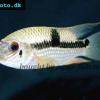 Acara
Acara  Yellow
Yellow  Patrick's
Patrick's  Blue
Blue  Green
Green 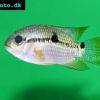 Acara
Acara  White
White  Compressed
Compressed 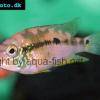 Pastel
Pastel  Midas
Midas  Red
Red  Bluemouth
Bluemouth  False
False 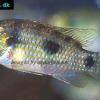 African
African  Agassiz's
Agassiz's  Banded
Banded 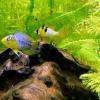 Yellow
Yellow  Cockatoo
Cockatoo  Blue
Blue  Blackstripe
Blackstripe  Highfin
Highfin  Redstripe
Redstripe  Threadfinned
Threadfinned  Macmaster’s
Macmaster’s 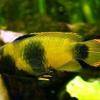 Panda
Panda  Norbert’s
Norbert’s 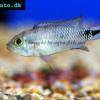 Blue
Blue  Thin-line
Thin-line  Three-striped
Three-striped  Viejita
Viejita 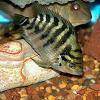 Flier
Flier  Archocentrus
Archocentrus  Convict
Convict  Seven
Seven  Spiny
Spiny  Oscar
Oscar  Sunshine
Sunshine  Chitande
Chitande  Firebird
Firebird  Midnight
Midnight  Lake
Lake  Sunshine
Sunshine  Aulonocara
Aulonocara 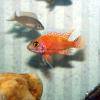 Ruby
Ruby  Grants
Grants  Aulonocranus
Aulonocranus  Chameleon
Chameleon  Benitochromis
Benitochromis  Orinoco
Orinoco  Yellow
Yellow 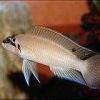 Brichard’s
Brichard’s  Guenther’s
Guenther’s  Southern
Southern  Cichla
Cichla 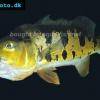 Peacock
Peacock  Chiseltooth
Chiseltooth  Bolivian
Bolivian  Red
Red  Many-pointed
Many-pointed  Jack
Jack  Red
Red  Three
Three 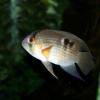 Keyhole
Keyhole  Azureus
Azureus  Red
Red  Jackson’s
Jackson’s  Crenicichla
Crenicichla  Honduran
Honduran  Blue-eye
Blue-eye  Afra
Afra 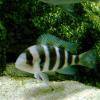 Frontosa
Frontosa  Slender
Slender  Malawi
Malawi  Chequerboard
Chequerboard  Checkerboard
Checkerboard  Malawi
Malawi  Ectodus
Ectodus  Tanganyika
Tanganyika  Canara
Canara  Green
Green  Rostratus
Rostratus  Pearl
Pearl 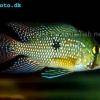 Geophagus
Geophagus  Yellowhump
Yellowhump  Suriname
Suriname  Redhump
Redhump  Red
Red  Dority’s
Dority’s  Argentine
Argentine 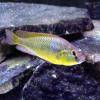 Burton’s
Burton’s  Victoria
Victoria 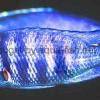 Haplochromis
Haplochromis  Jewel
Jewel  Banded
Banded 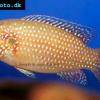 Lifalili
Lifalili  Lowland
Lowland  Texas
Texas  Pantano
Pantano  Severum
Severum  Banded
Banded 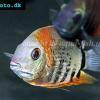 Severum
Severum  Rainbow
Rainbow  Parrot
Parrot  Chocolate
Chocolate  Brown
Brown  Marlieri
Marlieri  Golden
Golden  Striped
Striped  Masked
Masked 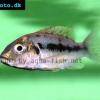 Konye
Konye  Blue
Blue  Trewavas
Trewavas  Electric
Electric  Dwarf
Dwarf  Redbreast
Redbreast  Lamprologus
Lamprologus  Gold
Gold 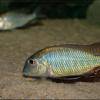 Greenface
Greenface 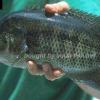 Mayan
Mayan  Aurora
Aurora  Blue
Blue  William’s
William’s 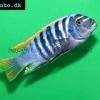 Zebra
Zebra  Malawi
Malawi  Blue
Blue 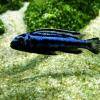 Blue
Blue  Mbuna
Mbuna  Parallel
Parallel  Purple
Purple  Flag
Flag  Bolivian
Bolivian  Ram
Ram  Basket
Basket 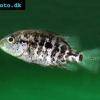 Haitian
Haitian  Zebra
Zebra  Striped
Striped  Neolamprologus
Neolamprologus  Brevis
Brevis  Fairy
Fairy 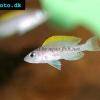 Neolamprologus
Neolamprologus  Cylindricus
Cylindricus  Hecq’s
Hecq’s  Neolamprologus
Neolamprologus  Lemon
Lemon  Mustax
Mustax  Daffodil
Daffodil  Six-bar
Six-bar  Five-bar
Five-bar  Marbled
Marbled 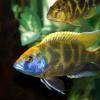 Giraffe
Giraffe  Blue
Blue  Sulphurhead
Sulphurhead  Wolf
Wolf  Jaguar
Jaguar  Blue
Blue  Marakeli
Marakeli  Madagascar
Madagascar  Pinstripe
Pinstripe  Pelmatochromis
Pelmatochromis  Kribensis
Kribensis 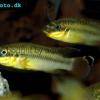 Striped
Striped  Red
Red  Deepwater
Deepwater  Fenestratus
Fenestratus  Nichols’
Nichols’  Southern
Southern  Bumble
Bumble  Demason’s
Demason’s  Slender
Slender  Red
Red  Mbuna
Mbuna  Malawi
Malawi  Kenyi
Kenyi  Powder
Powder  Altum
Altum  Angelfish
Angelfish  Angelfish
Angelfish 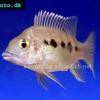 East
East  Juba
Juba  Earth
Earth 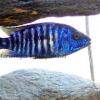 Electric
Electric  Azure
Azure  Lionhead
Lionhead  Discus
Discus  Blue
Blue  Red
Red  Zebra
Zebra  Brichard’s
Brichard’s  Blue
Blue  Firemouth
Firemouth  Zebra
Zebra  Yellow
Yellow  Blue
Blue  Dwarf
Dwarf  Blunthead
Blunthead 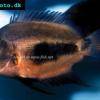 The
The  White
White  Twoband
Twoband  Fenestratus
Fenestratus  Window
Window  Tailbar
Tailbar  Black
Black  Redhead
Redhead 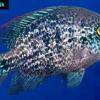 Oaxaca
Oaxaca  Xenotilapia
Xenotilapia